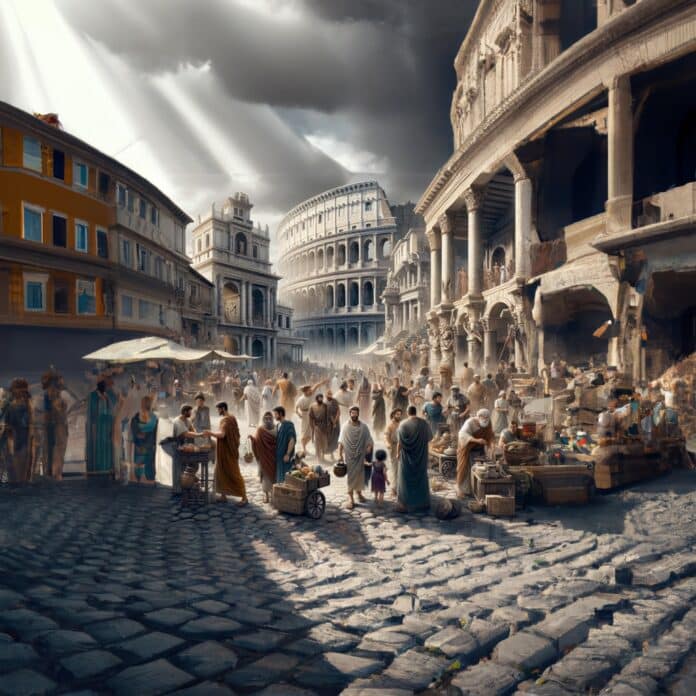Daily life in Ancient Rome varied significantly based on one’s social class, but the structure of society provided certain rhythms and routines that most Romans shared. For the wealthy elite, life was characterized by luxury and leisure, with lavish homes, banquets, and political or social engagements occupying their time. Meanwhile, the majority of Romans, including tradesmen, artisans, and farmers, led lives dominated by work, family responsibilities, and the bustle of urban life. The central feature of Roman society was the family, or familia, which played a crucial role in maintaining order and social stability.
The day for a typical Roman began early. At sunrise, most citizens would perform personal hygiene routines, which often included washing with water and olive oil. Wealthier Romans had access to baths in their homes, while others frequented public bathhouses later in the day. Breakfast, or ientaculum, was a light meal, usually consisting of bread, fruit, or cheese. For the poor, this might be the only substantial meal of the day, while the affluent enjoyed more elaborate spreads. The morning hours were often dedicated to work or education, depending on one’s station. While laborers and craftsmen headed to markets or workshops, children from wealthy families attended school, where they learned reading, writing, and rhetoric.
Afternoon activities in Ancient Rome reflected a mix of public and private life. For the elite, afternoons could be spent in political assemblies, legal courts, or overseeing the affairs of their estates. Roman senators and politicians engaged in public discourse, while wealthy women managed household affairs and slaves. The forum, the heart of Roman public life, was always bustling with vendors, public speakers, and citizens conducting business. Meanwhile, lower-class Romans worked into the afternoon, with many laborers, tradesmen, and farmers engaged in physically demanding tasks. The bustling streets and markets in Rome’s urban centers provided ample opportunity for social interaction, gossip, and political debate.
Entertainment and leisure played a prominent role in Roman life, offering a break from the everyday grind. Public games, gladiatorial contests, and theater performances were common sources of entertainment for all social classes. The Colosseum and the Circus Maximus hosted grand spectacles, from gladiator fights to chariot races, which could draw tens of thousands of spectators. In addition to these large public events, many Romans enjoyed time at public baths, where bathing was often a social activity. The baths were more than just places to clean; they served as centers for relaxation, exercise, and conversation.
The evening was a time for family and communal meals. Wealthier Romans enjoyed elaborate dinners, or cena, often featuring multiple courses of meats, fish, vegetables, and wine. These meals were opportunities to entertain guests, engage in intellectual conversation, and show off one’s status. For the lower classes, dinner was more modest, usually consisting of bread, porridge, or stew. After dinner, many Romans participated in household rituals, offering prayers to the household gods, known as the Lares. While the city of Rome never truly slept, with its streets alive with noise and activity at all hours, most Romans retired early to prepare for the next day’s demands. Life in Ancient Rome was a delicate balance of work, social duty, and enjoyment, where one’s daily experience was shaped by both the grandeur of the empire and the demands of ordinary life.

